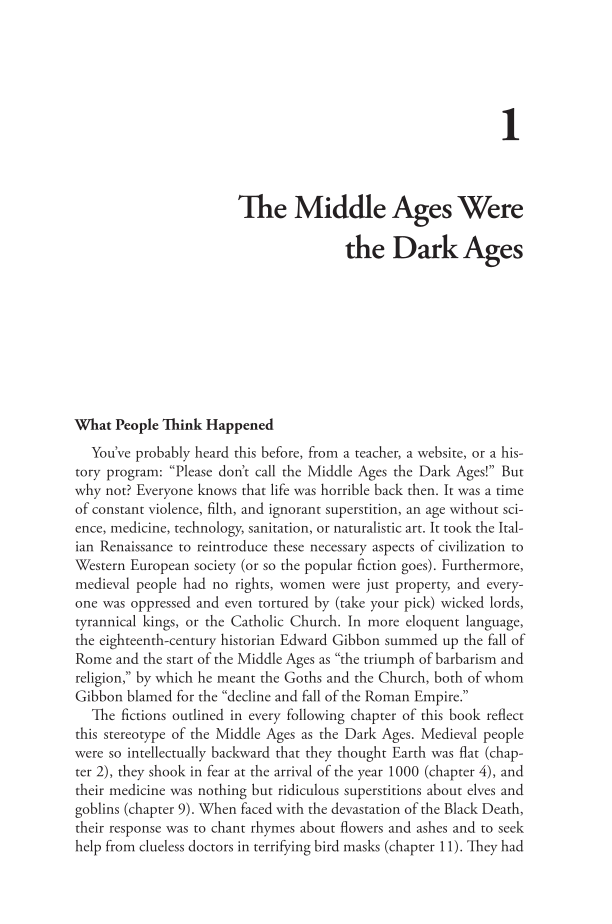1 The Middle Ages Were the Dark Ages What People Think Happened You’ve probably heard this before, from a teacher, a website, or a his- tory program: “Please don’t call the Middle Ages the Dark Ages!” But why not? Everyone knows that life was horrible back then. It was a time of constant violence, filth, and ignorant superstition, an age without sci- ence, medicine, technology, sanitation, or naturalistic art. It took the Ital- ian Renaissance to reintroduce these necessary aspects of civilization to Western European society (or so the popular fiction goes). Furthermore, medieval people had no rights, women were just property, and every- one was oppressed and even tortured by (take your pick) wicked lords, tyrannical kings, or the Catholic Church. In more eloquent language, the eighteenth-century historian Edward Gibbon summed up the fall of Rome and the start of the Middle Ages as “the triumph of barbarism and religion,” by which he meant the Goths and the Church, both of whom Gibbon blamed for the “decline and fall of the Roman Empire.” The fictions outlined in every following chapter of this book reflect this stereotype of the Middle Ages as the Dark Ages. Medieval people were so intellectually backward that they thought Earth was flat (chap- ter 2), they shook in fear at the arrival of the year 1000 (chapter 4), and their medicine was nothing but ridiculous superstitions about elves and goblins (chapter 9). When faced with the devastation of the Black Death, their response was to chant rhymes about flowers and ashes and to seek help from clueless doctors in terrifying bird masks (chapter 11). They had
Document Details My Account Print multiple pages
Print
You have printed 0 times in the last 24 hours.
Your print count will reset on at .
You may print 0 more time(s) before then.
You may print a maximum of 0 pages at a time.








































































































































































































































































